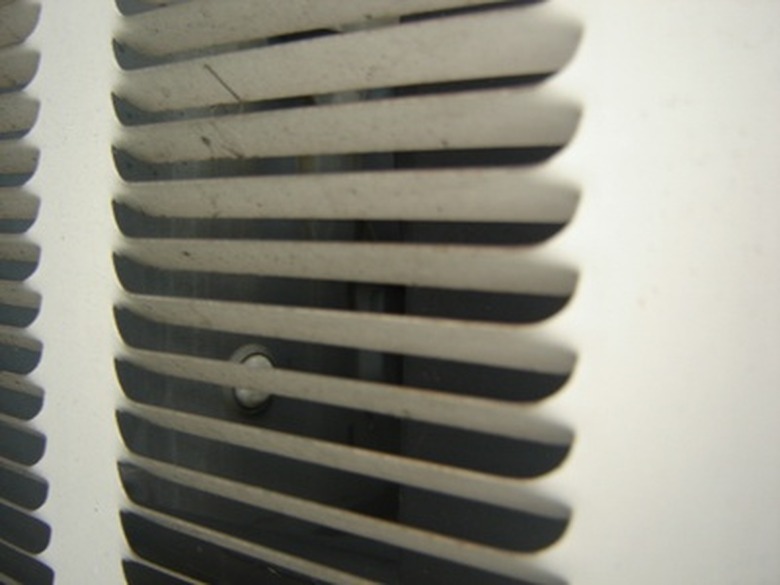How To Calculate Airflow With Dust Extraction
Local exhaust ventilation systems extract dust from the air. A fan in the system creates a pressure differential, which sucks air into a duct. A hood captures the dust by either enclosing the area or sucking the contaminants much as a vacuum cleaner would. The volume of air that travels through an LEV system depends on the air velocity and the size of the air duct. Calculate this airflow to determine how efficiently the system is working and whether you need to replace any components.
Step 1
Navigate your browser to the LEV calculator from the link in the Resources section of this article.
Step 2
Enter the air's velocity, measured in meters per second, in the "m/s" text box in the "Volume flow" section. If you do not have this data, measure the air's velocity by holding a flow meter to the duct.
Step 3
If the duct is circular, choose "Circumference," "Diameter" or "Radius" from the measurement drop-down box. Enter the circumference, diameter or radius, measured in meters, in the "m" text box. If the duct is rectangular, enter its length and width in the text boxes beside the words "a rectangular duct."
Step 4
Click the "is:" button. The system's airflow will appear in the "Volume flow" box.
Cite This Article
MLA
Menezes, Ryan. "How To Calculate Airflow With Dust Extraction" sciencing.com, https://www.sciencing.com/how-7927316-calculate-airflow-dust-extraction/. 7 August 2017.
APA
Menezes, Ryan. (2017, August 7). How To Calculate Airflow With Dust Extraction. sciencing.com. Retrieved from https://www.sciencing.com/how-7927316-calculate-airflow-dust-extraction/
Chicago
Menezes, Ryan. How To Calculate Airflow With Dust Extraction last modified March 24, 2022. https://www.sciencing.com/how-7927316-calculate-airflow-dust-extraction/
